Jewel Cave National Monument, SD, July 2025
There are 3 national monuments within an hour of Custer State Park. The monuments are Jewel Cave National Monument, Wind Cave National Monument and Mount Rushmore National Monument.
Jewel Cave has a .25 mile, 3.5 mile, and 5.5 mile hike near it. The .25 miles hike starts and ends at the visitor center. The 3.5 mile hike branches off the .25 mile hike and rejoins further along. The 3.5 mile hike passes through a canyon behind the cave, through the historic Jewel Cave entrance, and back along the ridge to the .25 mile hike. The 3.5 mile trail was reported to have quite a few birds on it. The trailhead of the 5.5 mile hike required driving a few miles down the road, and it was further than we wanted to hike in the heat.
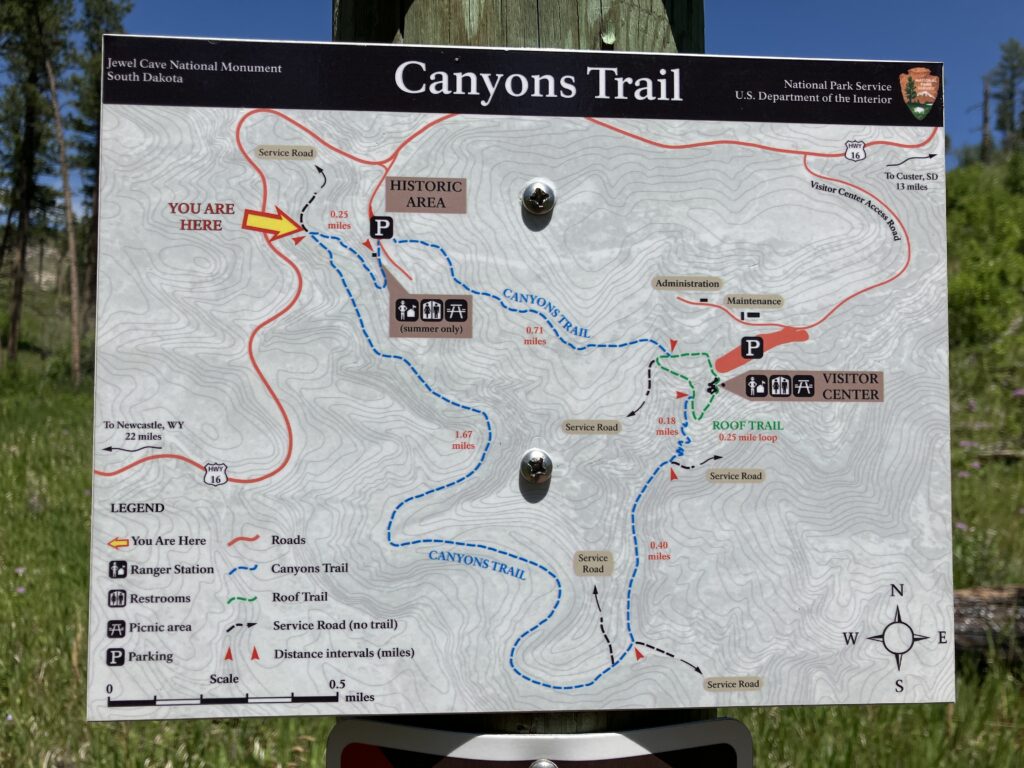
There are large open fields with burnt tree sticking up. The area was hit by a major forest fire in 2000 and efforts to re-vegetate the burn scar have been ongoing for more than 20 years. The cause was determined to be arson. The culprit was apprehended and sentenced to 10 year and 25 years. Sadly, the sentences are concurrent instead of sequential. You can read more about the arson here and land management with fire here.

The visit started with Kate buying post cards and applying cancel stamps to her park book and post cards while John wandered the store and visitor center. John found a game in the store that is all about S’mores – Toasted or Roasted. We did not get any pictures of the educational material in the visitor center. We want to get a better picture of the swallows, so we might get those pictures later.
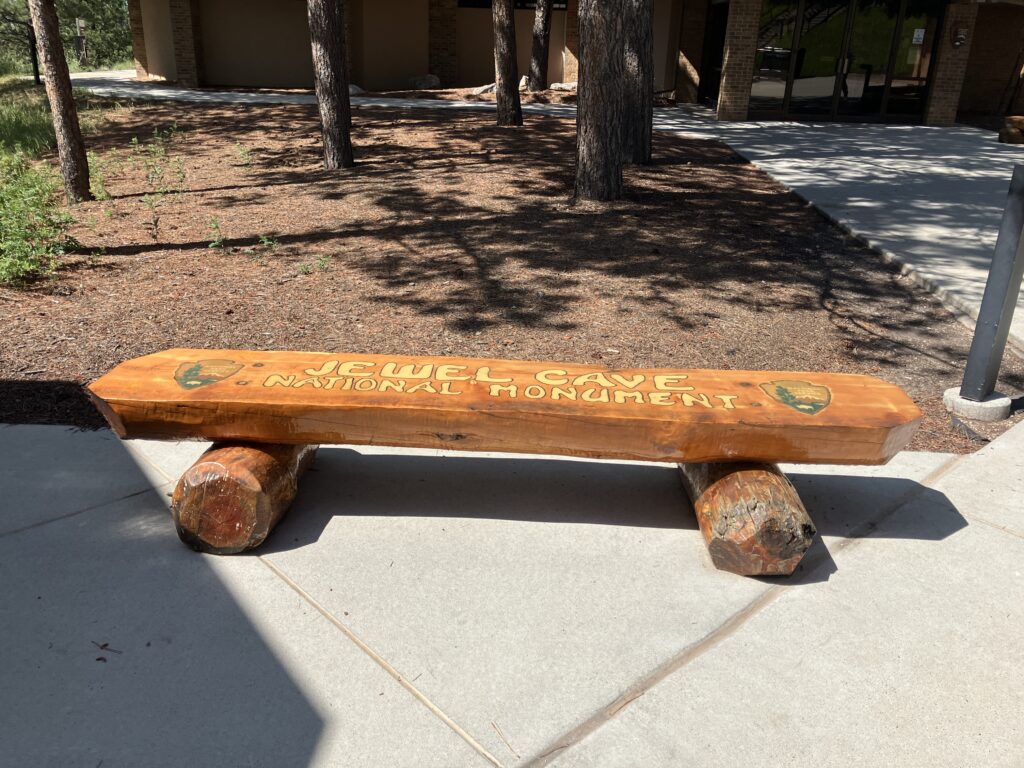
The trail wandered down through a Ponderosa Pine forest to a gravel road. We heard some bird, but we could not see them through the trees. We did run across a pretty wild flower called a Wild Bergamot. Apparently, it is edible and can be used as a bee balm. It has a citrusy-minty flavor.

The trail opened up into a healing burn scar with dead and burnt trees poking up through the grass and hills. You can see some of the dead trees poking up behind Kate.
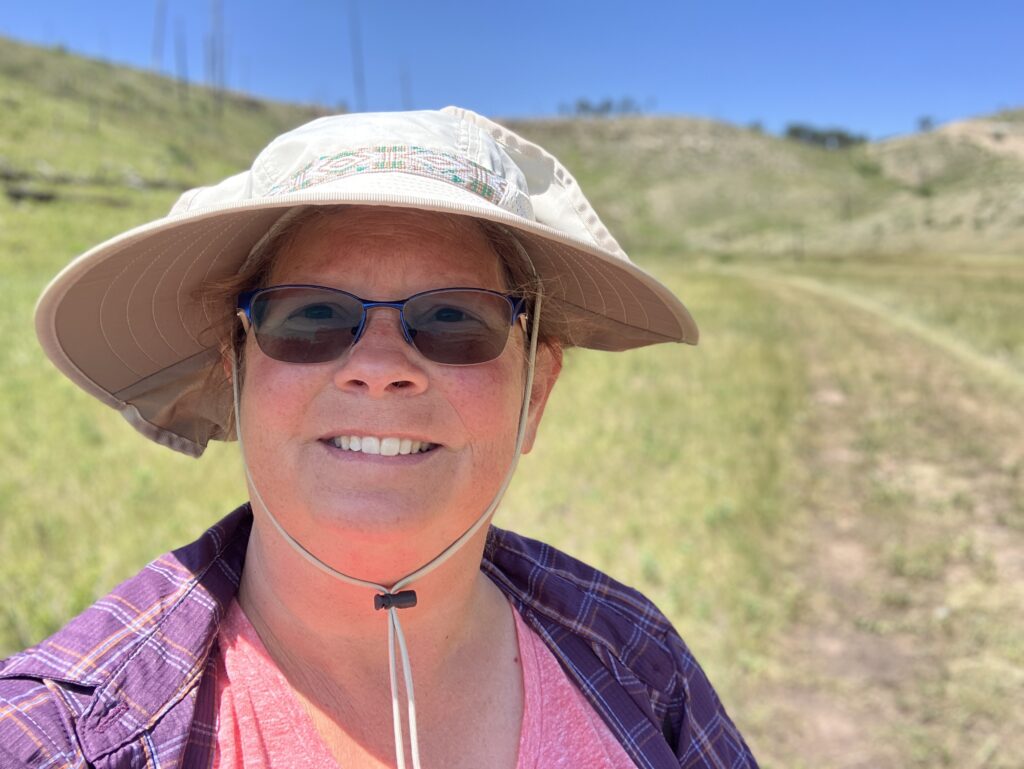
The area with dead trees had both Lewis and Red-headed Woodpeckers. Lewis Woodpeckers are unique in that they are olive green on the back with a red belly and face. All of the woodpeckers were skittish, so the pictures are not close-ups. John tried to get some Birds-in-Flight (BIF) pictures, but none of them turned out very crisp.


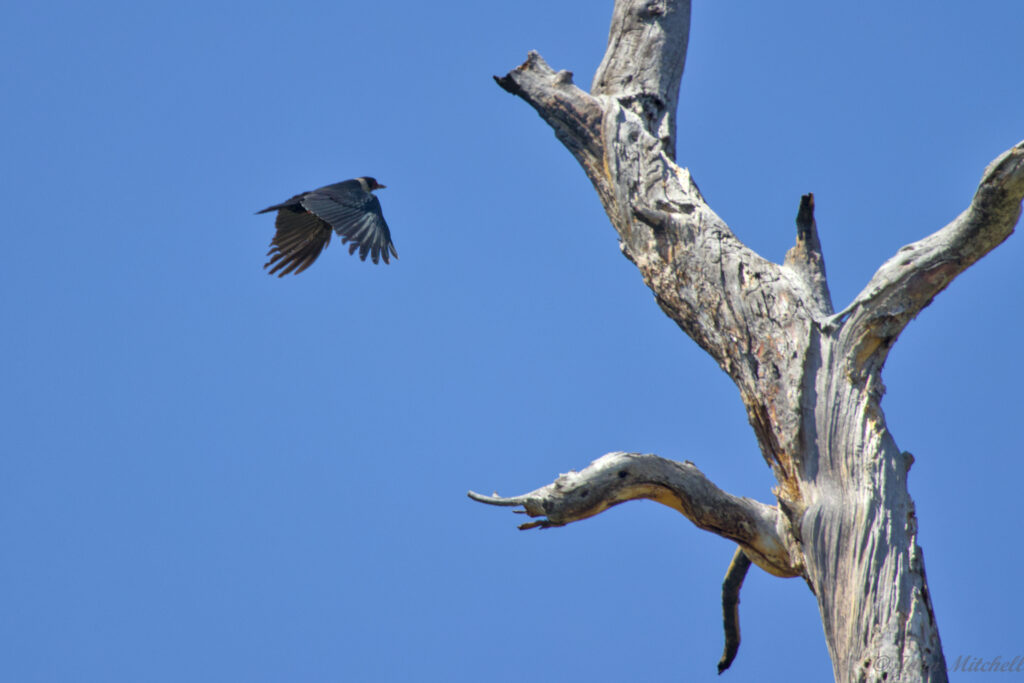


The Red-headed woodpeckers were even more skittish.

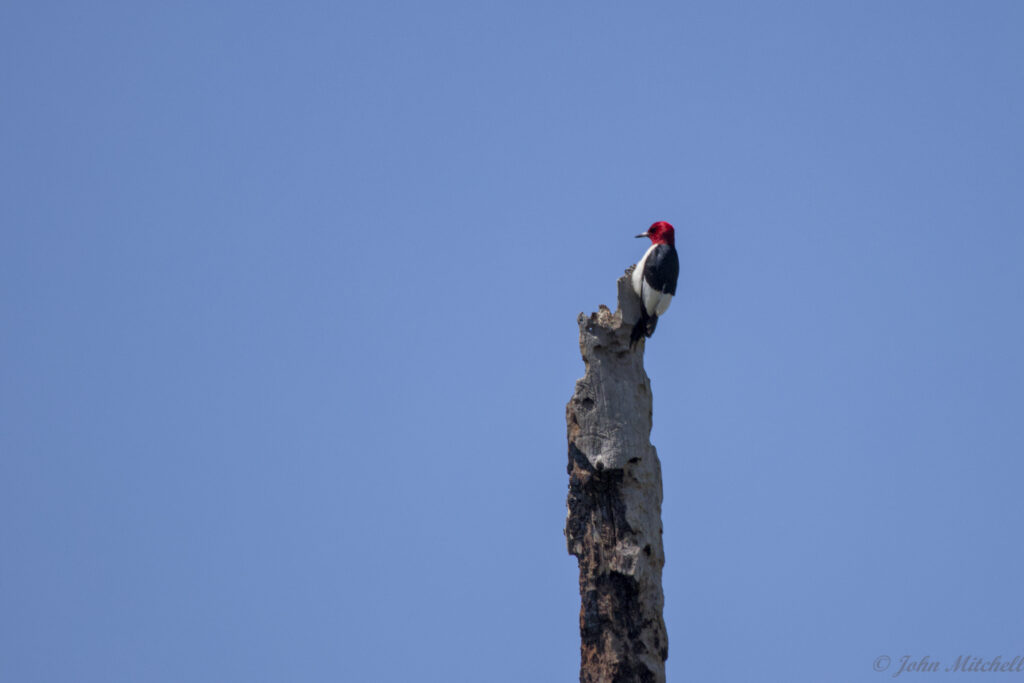

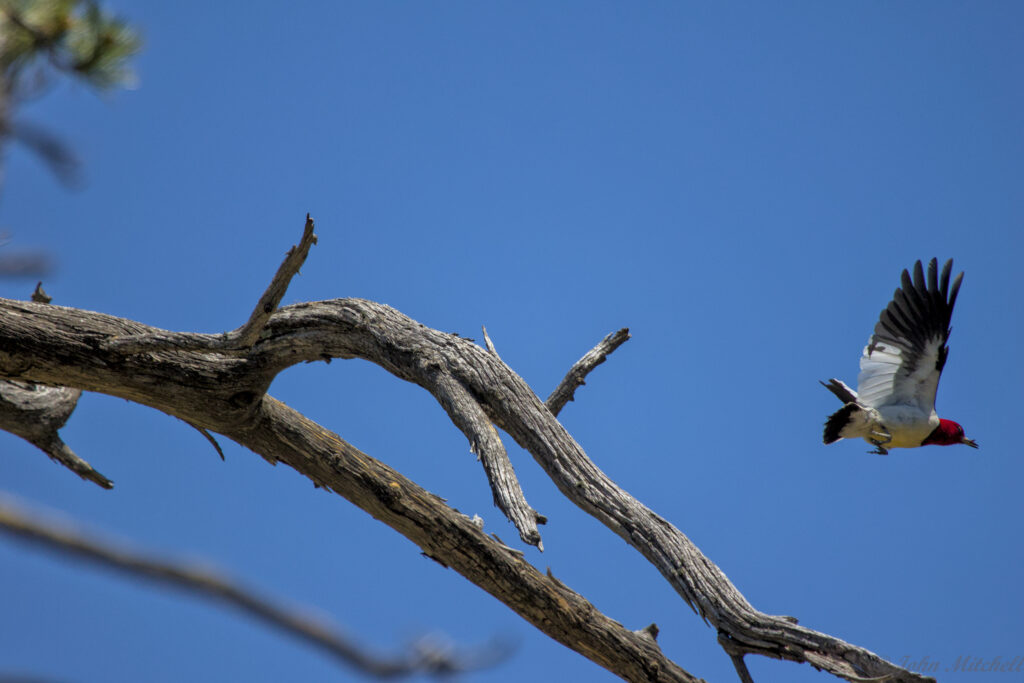
Nearly the entire canyon was burned out with just grass and wildflowers..



The grasslands and wildflowers did attract a lot of small butterflies. This is probably a Common Checkered Skipper.



In the middle of the hike, we saw small cliff ahead. Just before the cliff was a small copse of Ponderosa Pine, we saw Brewer’s Blackbirds and Red-winged Blackbirds squawking and squabbling in the grass. We had seen plenty of those in Yellowstone, but in the trees, we saw Eastern Kingbirds. They are not as pretty as the Western Kingbird because they lack the bright yellow of the Western ones.

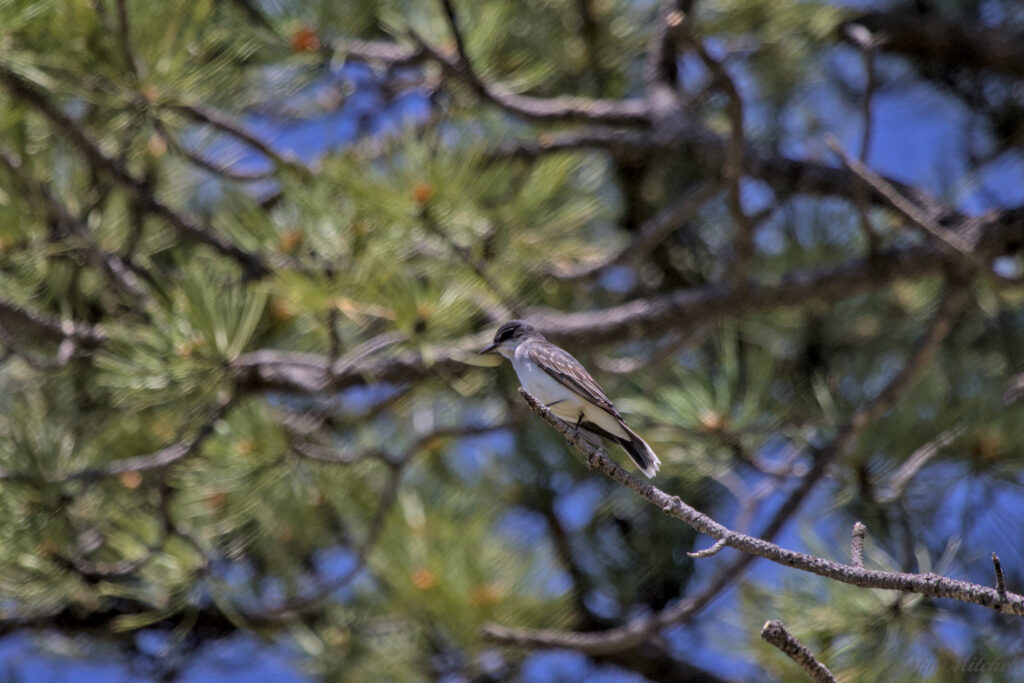
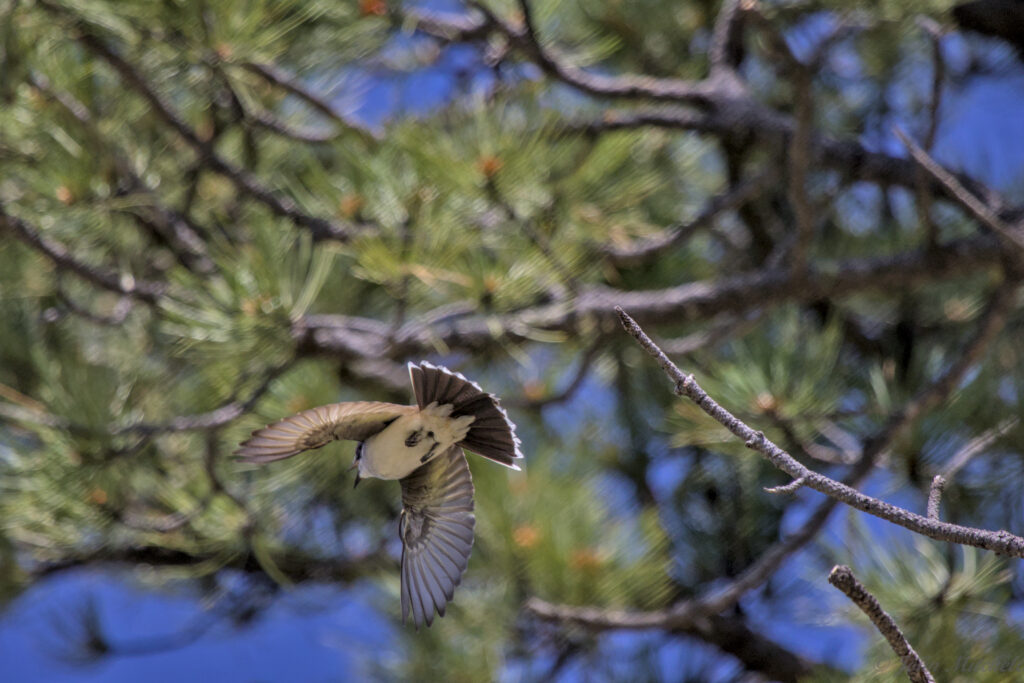

As we approached the cliff, we saw swallows flying around it. Most of them looked like Tree Swallows, but there were even some Violet-Green Swallows. After about five minutes of failed pictures, John stood in front of the nest to get pictures. As it turns out, swallows can leave their nest faster than John’s reaction speed. He deleted about 98 pictures of the nest entrance with no bird in the picture. The pictures do not do their colors justice.




Just past the swallow cliffs was a grove of trees filled with birds. The first thing we ran across were White-breasted Nuthatches. The are little birds that jump around like they have had too much coffee. They hang off the side of trees looking for bugs to eat.
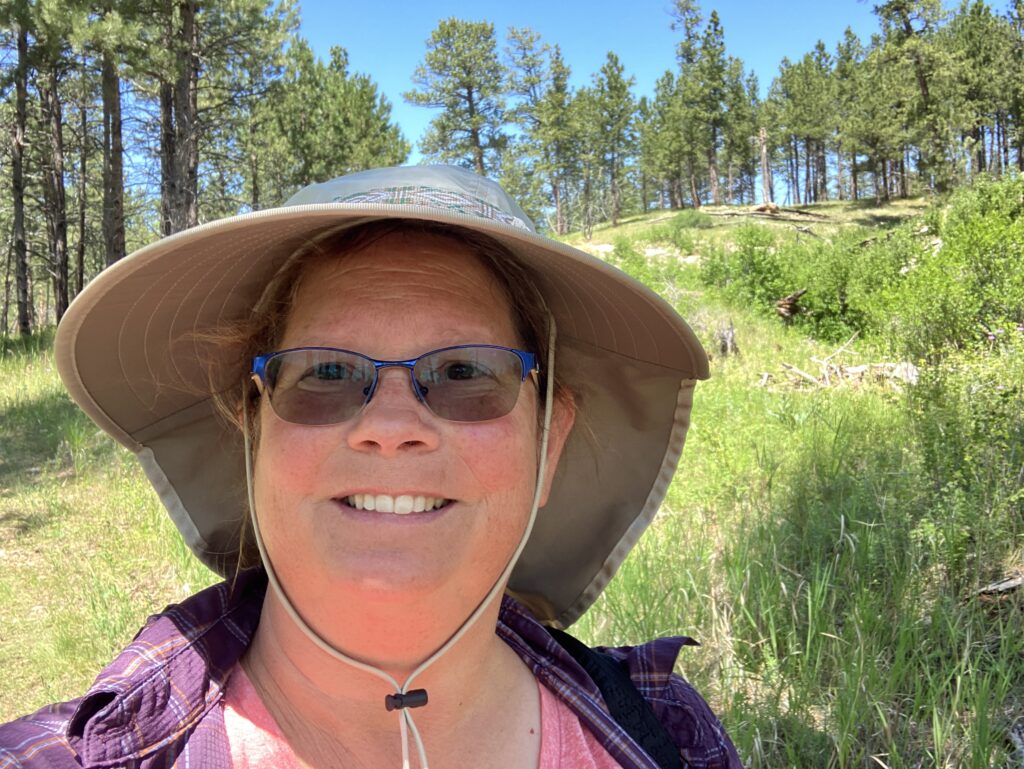





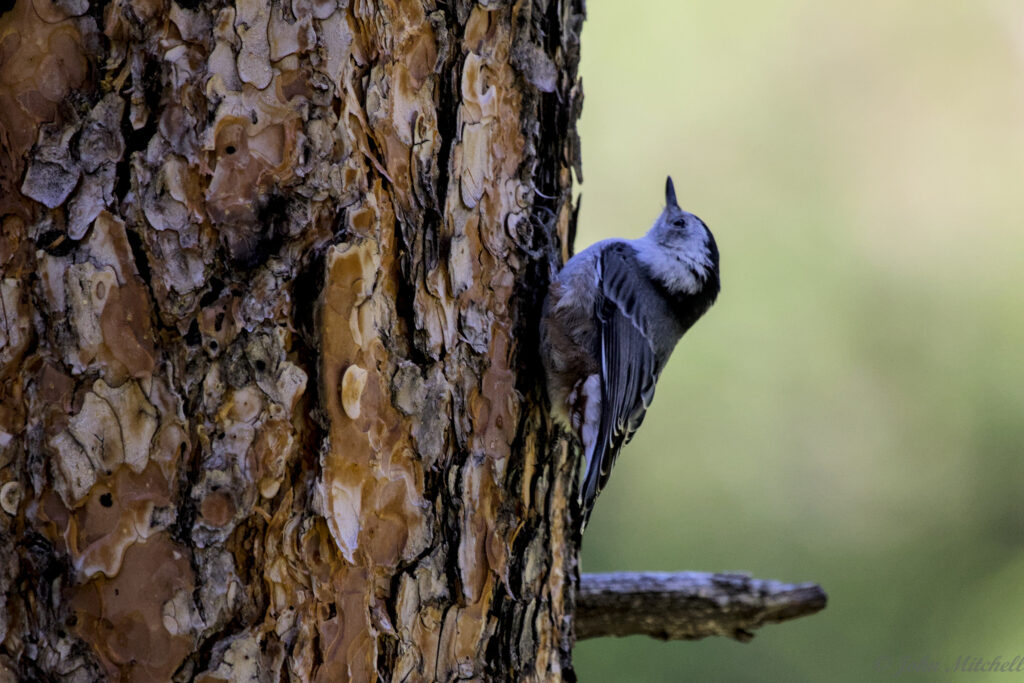
We saw what we though was an Oriole, but the orange was a bit drab. It turned out to be a Black-headed Grosbeak. Even though they look a bit similar, they are not related. The Grosbeak is in the Cardinal family, and the Oriole is in the Blackbird/Meadowlark family.
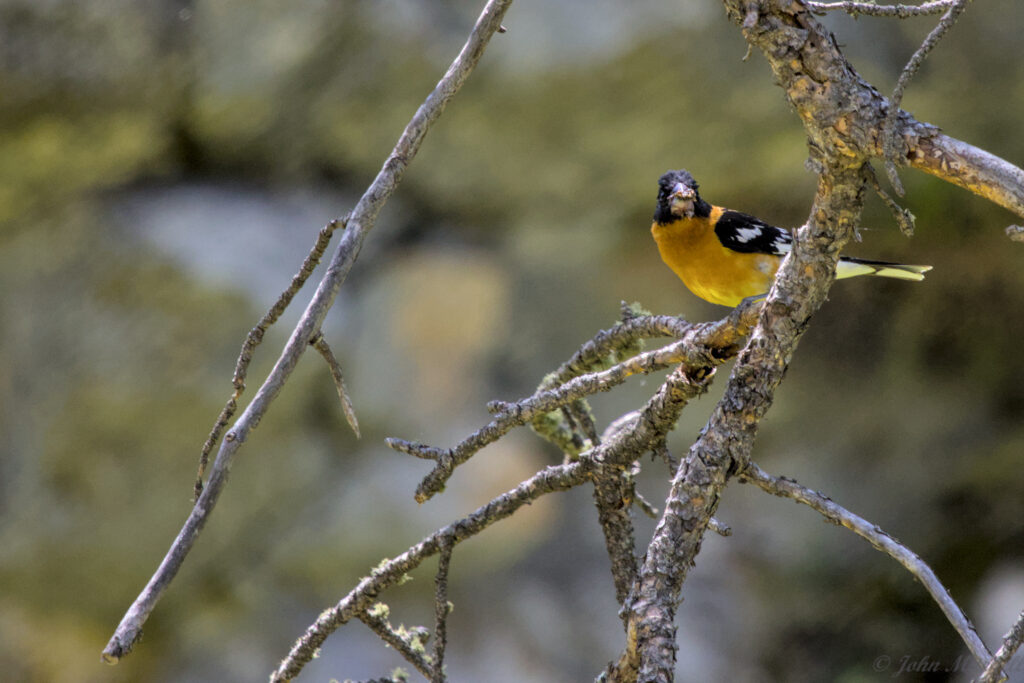

After the small grove, it was back to the fields and wildflowers with mostly insects.
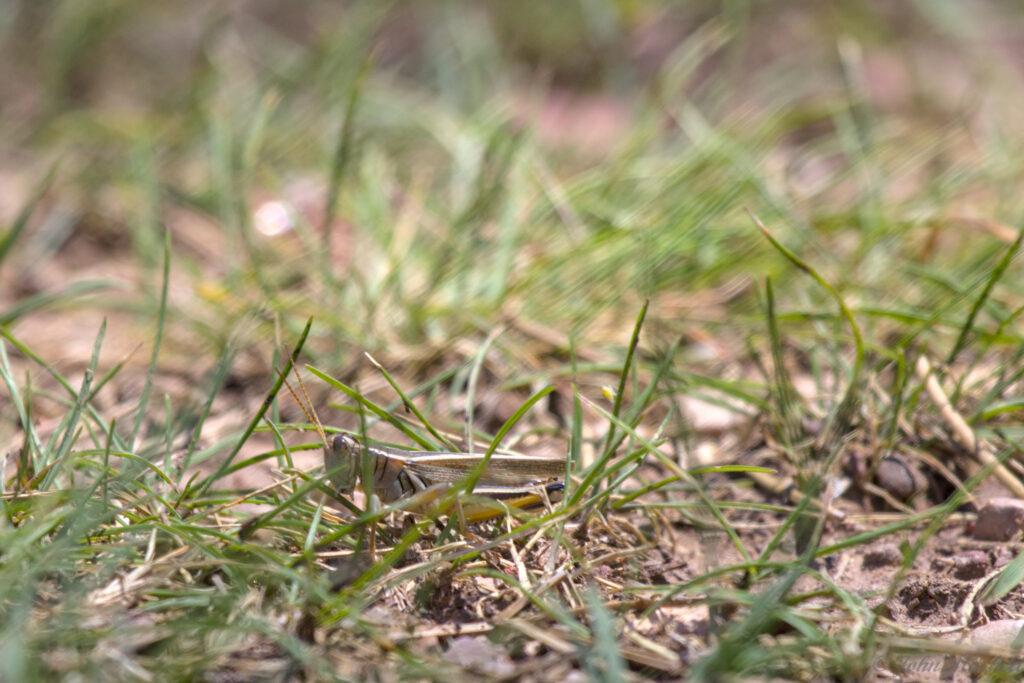
In order, they are probably , Clouded Sulphur, Aphrodite Fritillary, Aphrodite Fritillary, Drummond’s Thistle, Drummond’s Thistle with a Green Sweat Bee.






On the way up the hill and out of the canyon, we saw two small raptors flying. One of them landed, but it was too far away to get a decent picture. It did have very distinct facial markings, so we were able to identifying it as an American Kestrel. They are about half the size of a Red-tailed Hawk. We did get pictures of more butterflies and a honey bee on … Showy Milkweed?

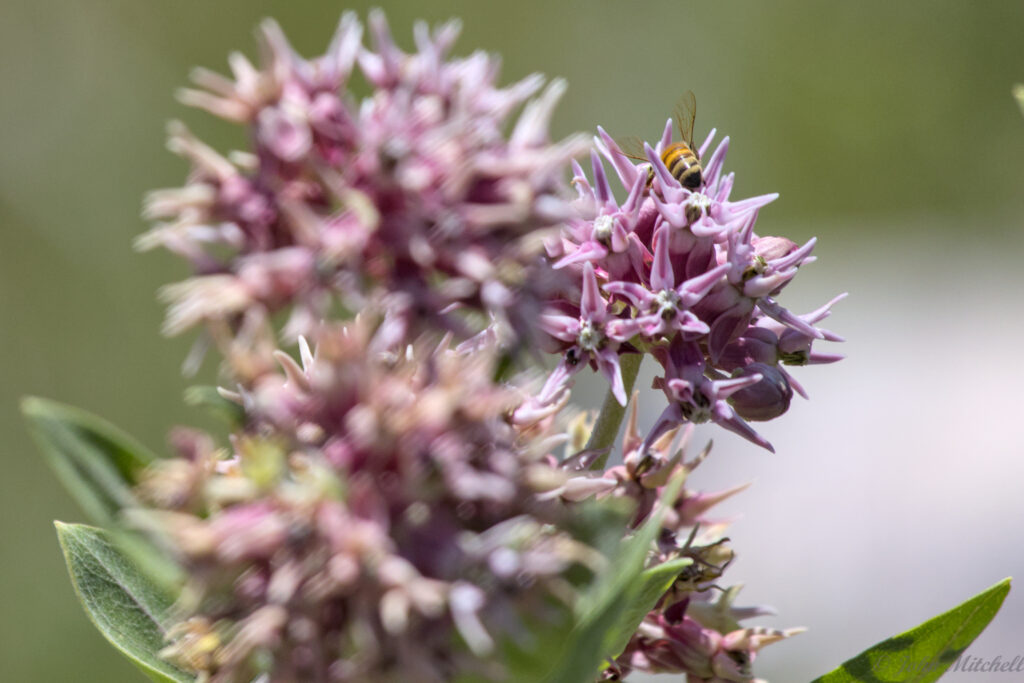
The historic Jewel Cave area has a set of steps going up the side of a bluff. (One of the horse we saw earlier pooped here too. At least SOME dog owners clean up after their dog. We have yet to see a horse rider clean up after their horse.) In the middle of the climb is a gated entrance that might be the access point for the historic lantern tours. We both through this sounded really neat until we read the reviews. Most people said it was not great. You were basically walking through the cave in the dark and could not see anything. We think this might be the entrance.
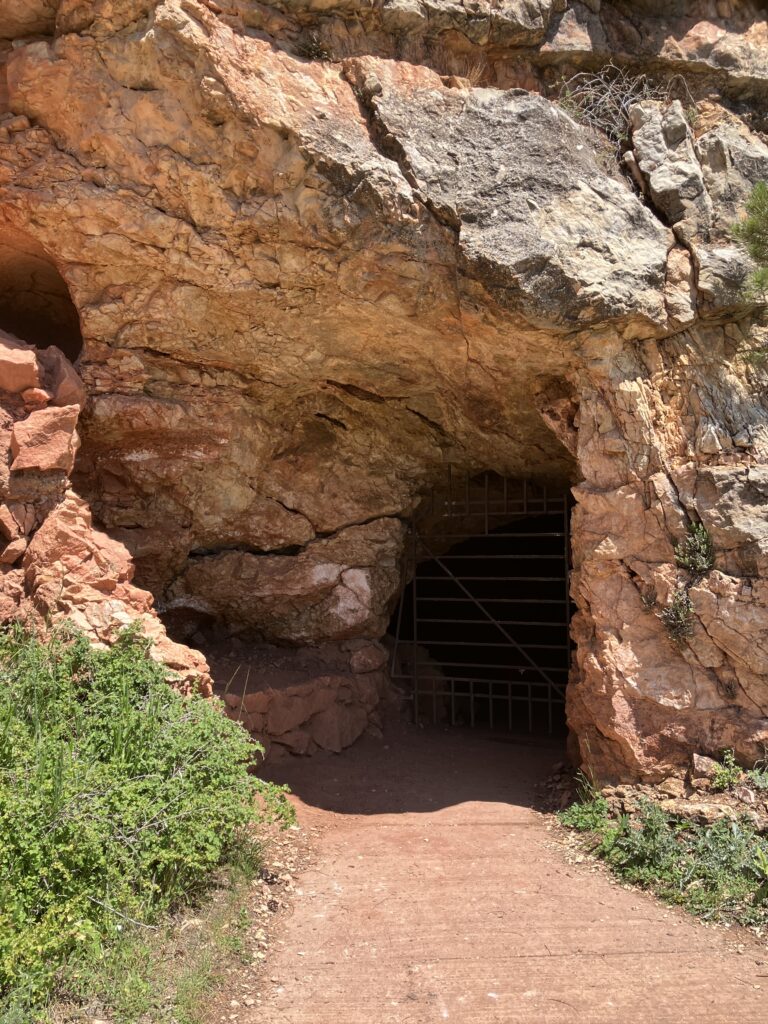
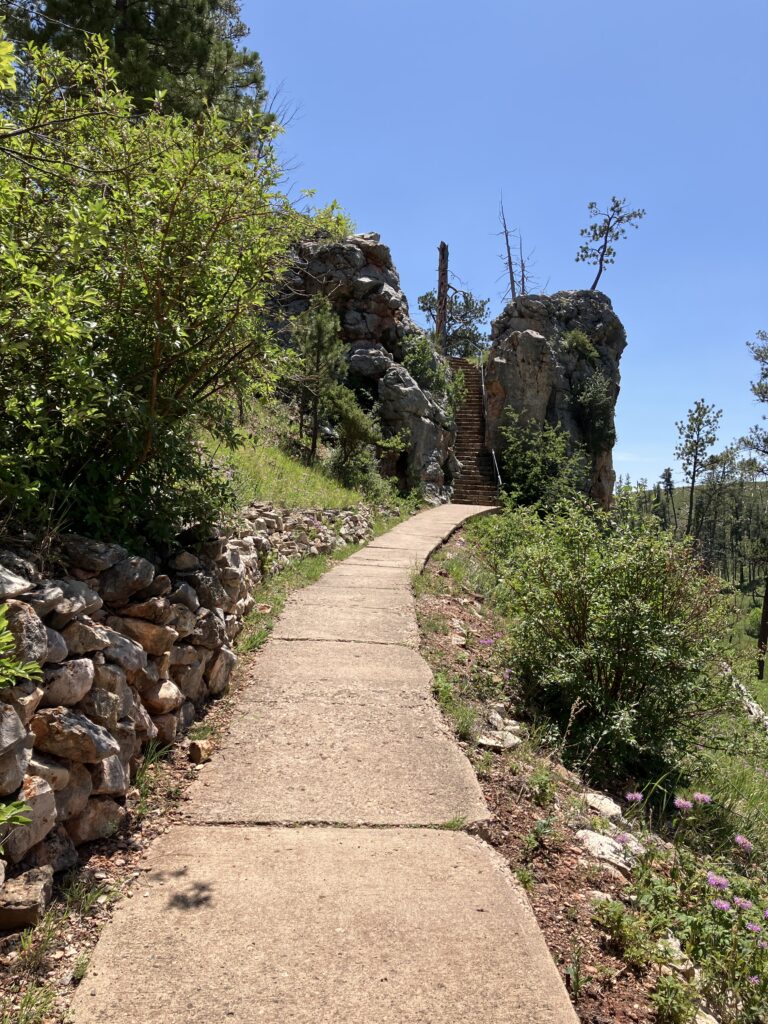

The remainder of the hike back was uneventful.
For the most part, the trail is not strenuous or difficult. Only the descent into the canyon and ascent out of the canyon present any significant strain. The descent down was a maintained gravel path with some steps. The roughly two miles of trail in the canyon is level, wide, and mowed. The ascent at the historic area was less well maintained. It appeared to be cleared by the steps of thousands of tourists versus maintenance. If you stay on the path, this is the only area that looks like it poses a tick risk. While the scenery is not particularly exciting, there are plentiful insects and birds along the trail to observe and photograph.
